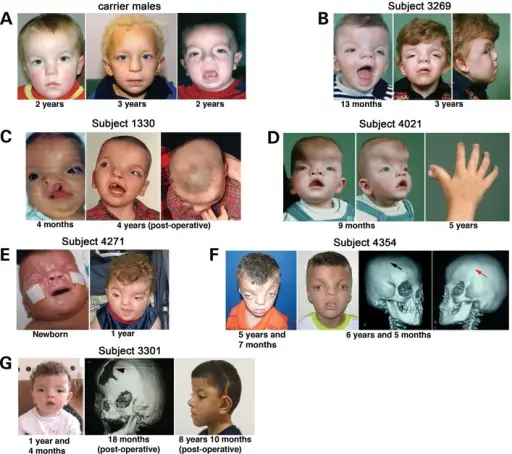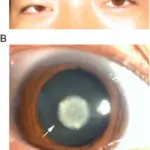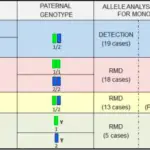X linked disorders are disorders caused by mutations in genes located on the X chromosome.
What are X Linked Disorders?

Clinical features of males hemizygous for EFNB1 mutations (A) and mosaic males analysed in this study (B–G). (A) Previously published males (14,32) with EFNB1 mutations. The individuals shown are the offspring of females carrying EFNB1 mutations, indicating that all these males are fully hemizygous; this was confirmed by restriction digest and/or sequencing of DNA isolated from peripheral blood. Note mild facial features of these individuals, who exhibit hypertelorism, but not craniosynostosis. (B–G) Males diagnosed with CFNS (pre-operative images unless stated). Common features include coronal craniosynostosis [three-dimensional computed tomographic skull reconstructions in Subject 4354 (F) shows a patent right coronal suture (black arrow), but the left coronal suture is absent (red arrow) and instead there is a bony ridge; Subject 3301 (G) has a large ossification defect in the position of the metopic suture (arrowhead) and coronal craniosynostosis], craniofacial asymmetry [shown most clearly in the top view in (C)], hypertelorism, downslanting palpebral fissures and broad nasal roots with bifid nasal tips. Wiry hair is also present in most cases. Subject 1330 also presented with unilateral cleft lip (C) and Subject 4021 with duplex thumbs (D). Cellular interference in craniofrontonasal syndrome: males mosaic for mutations in the X-linked EFNB1 gene are more severely affected than true hemizygotes. Twigg SR, Babbs C, van den Elzen ME, Goriely A, Taylor S, McGowan SJ, Giannoulatou E, Lonie L, Ragoussis J, Sadighi Akha E, Knight SJ, Zechi-Ceide RM, Hoogeboom JA, Pober BR, Toriello HV, Wall SA, Rita Passos-Bueno M, Brunner HG, Mathijssen IM, Wilkie AO - Human molecular genetics (2013). Not Altered. CC.


